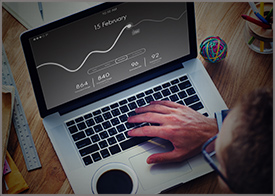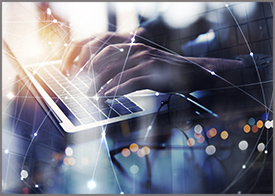
Utility companies are using smart meters to give customers control over their energy use. Smart thermostats can be used to gather data so that utility companies can gauge energy consumption and offer incentives to customers who conserve energy.
A smart energy grid allows utilities to control energy flow and increase efficiencies. Water sensors can track water quality and consumption. IoT devices are also used to manage utility assets such as oil wells, water tanks, and power lines.
Collect Data on Usage and Loss
 On-site manual meter readings are a thing of the past with smart meters. With smart meters (IoT devices), you can monitor your infrastructure in real time, detect leaks and breakdowns, and optimize your power grid. Plus, you can automate and optimize customer service functions, including billing and service activation or deactivation.
On-site manual meter readings are a thing of the past with smart meters. With smart meters (IoT devices), you can monitor your infrastructure in real time, detect leaks and breakdowns, and optimize your power grid. Plus, you can automate and optimize customer service functions, including billing and service activation or deactivation.
Utilities can also reduce the number of on-site visits for repair and maintenance. With remote monitoring capabilities, IoT sensors can detect equipment failure and energy decreases. The system can alert users to system abnormalities with email or SMS alerts.
Monitor Backup Power Supplies
As a utility, you provide critical services. An interruption in power service is more than an inconvenience. It can be life-threatening, depending on the circumstance. With IoT monitoring capabilities, utility companies can monitor and activate backup power supplies.
With IoT devices on-site to send data back to maintenance crews, it’s possible to get immediate event alerts and carry out remote diagnoses. When an issue does arise, maintenance crews will receive alerts and have a chance to respond.
Complete Network Visibility
 With IoT, the possibilities are endless. Utility companies can use IoT data to monitor any number of factors, including weather conditions, oil and gas supplies, and power pole proximity and number. Here are just a few use cases for IoT devices in the utilities industry.
With IoT, the possibilities are endless. Utility companies can use IoT data to monitor any number of factors, including weather conditions, oil and gas supplies, and power pole proximity and number. Here are just a few use cases for IoT devices in the utilities industry.
- Sensors for utility poles: Sensor technology exists that allows utilities to receive alerts when power poles tilt or fall, allowing for quick action to remediate possible outages from fallen or damaged lines and poles.
- Weather and water monitoring: More utilities are tracking weather and water conditions using IoT devices, which requires a low-latency fiber network for best results. Maintenance crews can be alerted to floods or other threats to power infrastructure. With an IoT early-warning system in place, utility companies have a chance to respond to events like storms, earthquakes, or fires.
-
Fuel supply management: With IoT capabilities, you can monitor fuel tank levels, manage supply levels remotely, and reduce your need for on-site visits. Plus, you can use the data you gather to efficiently manage your infrastructure.
Some communities are even rewarding customers who generate alternative energy (like wind and solar) and add it back to the grid.
From early-warning systems to automated customer service functions, IoT opens up many opportunities for utility companies to create efficient and resilient power supplies.
Where to Begin Your IoT Journey
Utility companies can often see the benefits of IoT for their industry and want to transform their operations, but they have no idea where to begin. In that case, they often look to a technology partner to help them:
- Articulate and quantify goals.
- Design a solution to fit goals, requirements, and budget.
- Implement and manage the solution for optimum return on investment.
FirstLight’s low-latency network and connectivity solutions provide a solid foundation upon which utility companies can build their IoT strategies.
Find out how FirstLight can serve your utility with state-of-the-art connectivity solutions. Download our network brief.





















